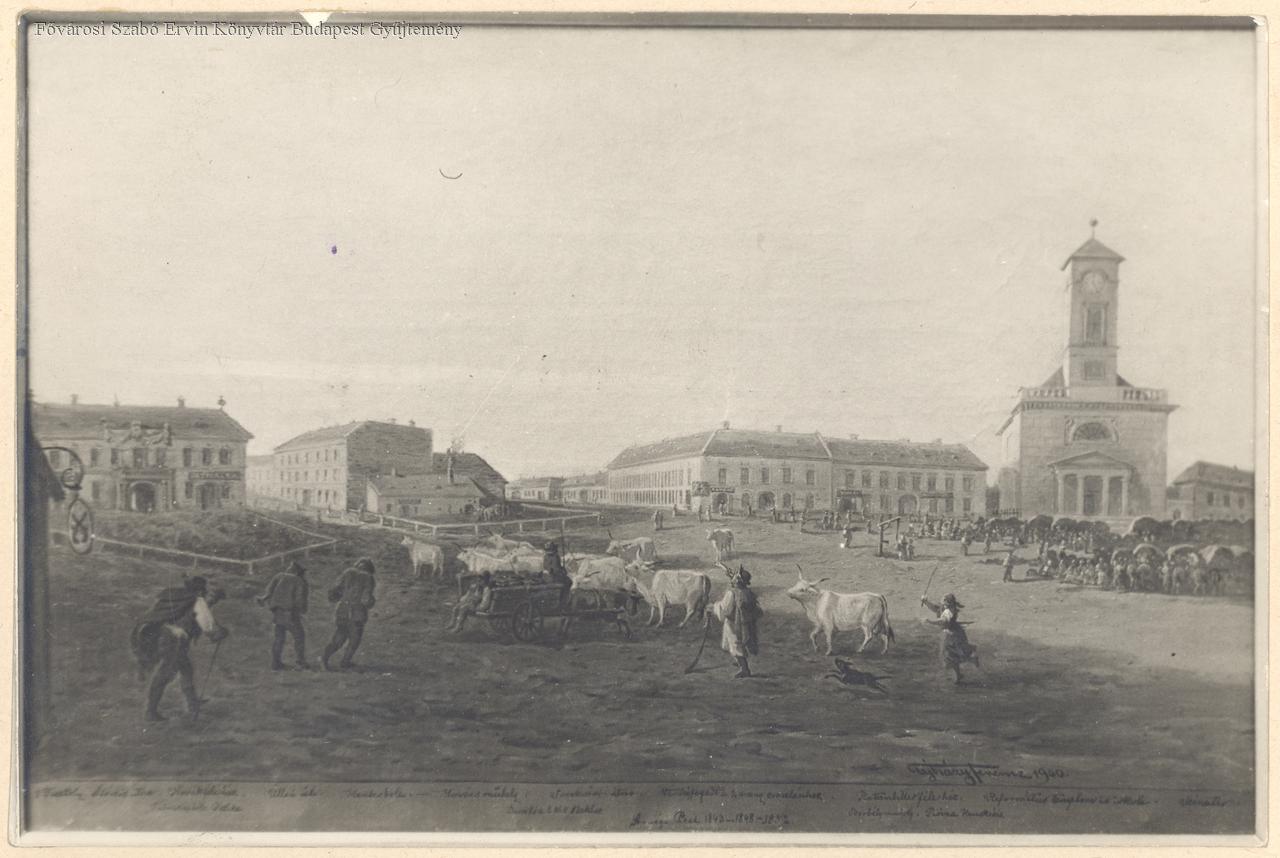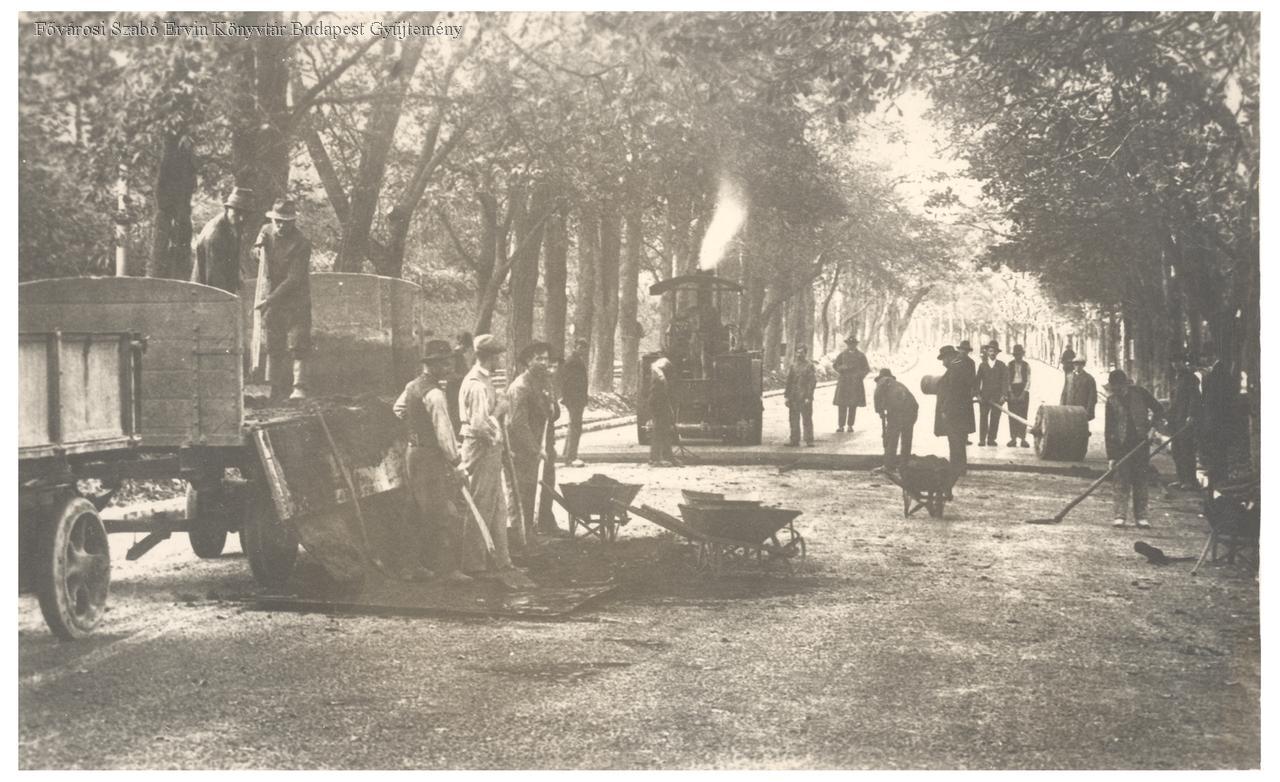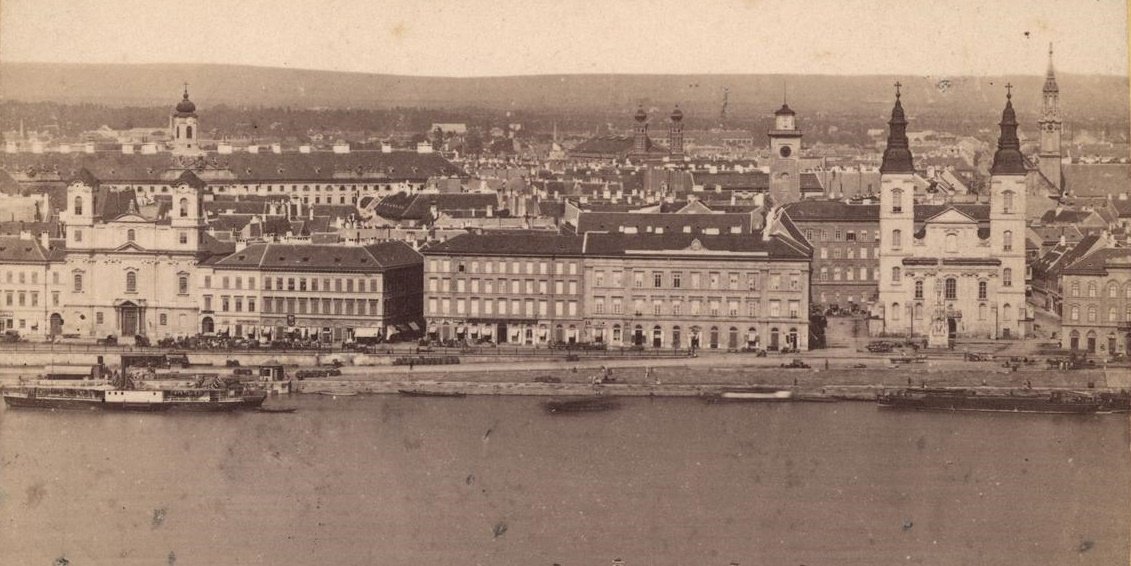The streets of Pest and Buda were largely unpaved 160 years ago. Even if there was a paved street, it looked quite different from today because the streets were concave, meaning the middle was lower, and pavements, if they were any, were designed quite differently than they are today.
The pavements were not separated from the road by a row of stones, but by a small earthy slope, although there was not much difference between someone walking on the road or the sidewalk, for pedestrians did not care.
There was, of course, a demand for paving the streets, although, in the 18th and the 19th century, there were paved streets and sidewalks, their proportion was not high. During the War of Independence, in 1849, when the seat of the government was in Pest for a short time, they immediately started the paving of Nádor Street - because the governor's office was there.

Kálvin Square at the beginning of the 19th century, there was no trace of paving (Source: FSZEK Budapest Collection)
Even after the defeat of the War of Independence, paving continued, as life did not stop. The 17 March 1861 issue of the Vasárnapi Ujság published the following short news:
"Several wealthy Pest residents are once again dealing with the idea that in Pest, the Váczi Road and the Ország Road, by planting promenades and handsome paving and cleanliness could be made similar to the boulevards of Paris. But who will provide the money for it?"
There really were those that paved out of private diligence, if not the entire street, but the sidewalk in front of their house. In fact, there were those who did not spare a coin and even used marble. The city of Pest eventually ordered that these be replaced with other stones because the marble, if wet, would slip, and this was dangerous, especially in winter. The newspaper Politikai Ujdonságok wrote of this on 10 October 1861:
"There are marble stone sidewalks in front of about 19 houses in Pest, which are dangerous for passers-by in terms of safety, especially in winter. Therefore, the city authority has now instructed the captain's office to call on the respective lords, who have such sidewalks in front of their houses, to replace them with ordinary cobblestone sidewalks in 14 days; otherwise, the change will be made by the city on their costs."
The city of Pest adopted a decree on the paving of the streets on 12 June 1861, i.e. 160 years ago, which made the paving of the streets and sidewalks of Pest the city's task.

In the second half of the 19th century, stone cubes were the general street paving material, except for bridges and the Avenue, today's Andrássy Avenue, where wooden cubes were used (Photo: Fortepan / Budapest Archives. Reference No.: HU.BFL.XV.19.d.1.08.008)
They also decided what to do if the homeowner wanted to do it faster than the city. At that time, paving could be allowed at the request of homeowners, but then land or homeowners had to pay four-fifths of the price of paving, but both the street and sidewalk stones became the property of the city.
In the city centre and Lipótváros, the homeowners were obliged to build the pavement, which should be a minimum of 4 and a maximum of 8 feet wide, and in the suburbs, a narrower, 3-6 foot wide sidewalk was enough. (A Viennese foot was 31,608 centimetres, meaning the 8-foot-wide sidewalk was already two and a half meters.)
The paving progressed slowly. A few years later, in 1868, the design of the edges of the sidewalks was regulated, from which time it was no longer a small slope, but a row of stones had to separate the street and the sidewalk. This solution didn't win everyone's liking in the early days, but it soon proved to be a useful thing.

Asphalt has been used in Budapest since 1864. The Budakeszi Road is asphalted here in 1920 (Photo: FSZEK Budapest Collection)
In the early days, there was not a large selection of paving materials. Stone, usually harder, and wood were used. Wooden cube was used on the Chain Bridge, then on the Avenue to be built (today Andrássy Avenue), and where the noise mattered, for example, around schools, because it had a great advantage, in addition to its lightweight, that horses and iron wheels ran quieter, however, its major drawback was that it was rapidly worn and had to be replaced every six years on average.
In 1864, a new material appeared in the field of pavements, asphalt. The first asphalt pavement was laid by Palatinus, today's Nádor Street, in front of number 21, by a Swiss-Hungarian company, but the attempt failed. The first public asphalt pavement was built in 1867 on Kristóf Square in Budapest and later became very popular. For the millennium, the streets of Budapest were covered with a larger proportion of asphalt than, for example, the roads of Vienna.
At the beginning of the 20th century, the Hungarian-developed paving material, yellow ceramic, appeared, which was quieter than the cube stone but slippery in wet weather, yet many streets were paved with ceramic.
However, most of the roads remained dirt roads even within the city, the paving of which is still a task for road managers today.
Cover photo: In the 1860s, the vast majority of the streets of Pest did not have stone paving (Photo: FSZEK Budapest Collection)





































Hozzászólások
Log in or register to comment!
Login Registration